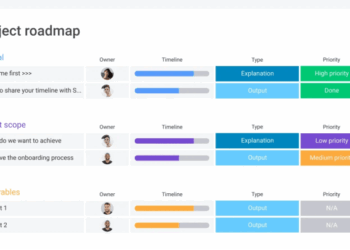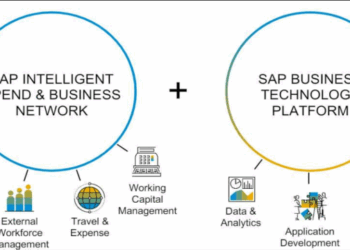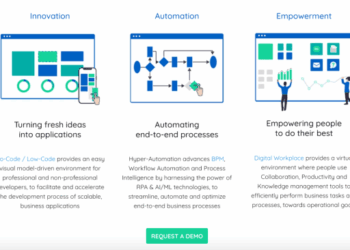Embark on a journey to discover the art of crafting a digital workspace with minimal downtime. This guide promises to unveil essential strategies and tips to enhance productivity and efficiency in your workspace.
Explore the key elements that contribute to a seamless digital environment and learn how to navigate challenges effectively.
Importance of a Digital Workspace
Having a digital workspace is crucial for businesses in today's fast-paced and technology-driven world. It provides a centralized platform for employees to collaborate, communicate, and access important information, leading to increased productivity and efficiency.
Benefits of a Digital Workspace
- Enhanced Collaboration: A digital workspace allows team members to work together in real-time, regardless of their physical location. This fosters collaboration and creativity among employees.
- Improved Efficiency: With all necessary tools and resources accessible in one place, tasks can be completed more efficiently, reducing downtime and increasing output.
- Streamlined Communication: Instant messaging, video conferencing, and file sharing features in a digital workspace facilitate quick and effective communication within the organization.
Examples of Industries Requiring a Digital Workspace
- Technology Sector: Companies in the tech industry heavily rely on digital workspaces to develop software, manage projects, and coordinate remote teams.
- Healthcare Industry: Healthcare providers use digital workspaces to securely store patient data, collaborate with colleagues, and streamline administrative processes.
- Financial Services: Banks and financial institutions utilize digital workspaces to ensure compliance, manage client accounts, and enable seamless communication among employees.
Strategies for Minimal Downtime
Setting up redundant systems is crucial to prevent downtime in a digital workspace. By having backup systems in place, you can ensure continuity of operations even if one system fails. Regular maintenance and updates are also essential for maintaining a stable digital workspace.
Keeping software, hardware, and security systems up to date can help prevent unexpected issues that may lead to downtime. Additionally, disaster recovery planning is key to minimizing the impact of downtime. Having a well-thought-out plan in place can help you quickly recover from any disruptions and keep your digital workspace running smoothly.
Tips for Setting Up Redundant Systems
- Invest in redundant hardware such as backup servers or storage systems.
- Utilize cloud services for data backups and redundancy.
- Implement failover mechanisms to automatically switch to backup systems in case of a failure.
Importance of Regular Maintenance and Updates
- Schedule routine maintenance tasks for software updates, security patches, and system checks.
- Regularly monitor system performance to identify potential issues before they cause downtime.
- Train employees on best practices for maintaining a secure and stable digital workspace.
Best Practices for Disaster Recovery Planning
- Create a comprehensive disaster recovery plan that includes steps for data recovery, system restoration, and communication protocols.
- Test your disaster recovery plan regularly to ensure its effectiveness in real-life scenarios.
- Designate a team or individual responsible for executing the disaster recovery plan in case of an emergency.
Choosing the Right Tools and Technologies
When it comes to creating a resilient digital workspace with minimal downtime, choosing the right tools and technologies is crucial. These tools can help streamline operations, improve efficiency, and ensure that your digital workspace runs smoothly. Let's explore some key considerations when selecting tools for your digital workspace.
Key Tools and Technologies for a Resilient Digital Workspace
- Monitoring Software: Implementing monitoring software can help you keep track of your digital workspace's performance in real-time. Tools like Nagios, Zabbix, or SolarWinds can provide valuable insights into system health and potential issues before they escalate.
- Backup and Recovery Solutions: Having robust backup and recovery solutions in place is essential for minimizing downtime. Tools like Veeam, Acronis, or Backup Exec can help you quickly restore systems and data in case of unexpected outages
.
- Automation Tools: Leveraging automation tools like Ansible, Puppet, or Chef can streamline routine tasks, reduce human error, and improve overall efficiency in managing your digital workspace.
Comparing Software Solutions for Monitoring and Managing Downtime
- Network Monitoring Tools: Tools like PRTG, SolarWinds Network Performance Monitor, or ManageEngine OpManager can help you monitor network performance, detect issues proactively, and troubleshoot connectivity problems.
- Server Monitoring Software: Solutions such as Datadog, New Relic, or Dynatrace offer comprehensive server monitoring capabilities, allowing you to track server health, performance metrics, and application dependencies.
- Application Performance Management (APM) Tools: APM tools like AppDynamics, Dynatrace, or New Relic APM can help you monitor application performance, identify bottlenecks, and optimize user experience to prevent downtime.
Importance of Scalability in Tool Selection
Scalability is a critical factor to consider when choosing tools for your digital workspace. Select tools that can easily scale with your business growth and evolving needs. Ensure that the tools you choose can handle increased workloads, additional users, and expanding infrastructure without compromising performance or reliability.
Employee Training and Support
Effective training and ongoing support for employees using digital workspace tools are crucial for ensuring smooth operations and minimal downtime in the workplace.
Training Employees on Using Digital Workspace Tools
- Provide comprehensive training sessions on how to use different digital workspace tools effectively.
- Offer hands-on training and simulations to help employees familiarize themselves with the tools.
- Encourage continuous learning by offering refresher courses and updates on new features.
- Utilize online resources and tutorials for self-paced learning.
Providing Ongoing Support to Troubleshoot Workspace Issues
- Establish a dedicated support team or helpdesk to assist employees with workspace-related problems.
- Encourage open communication channels for employees to report issues promptly.
- Implement a ticketing system to track and prioritize support requests.
- Regularly update employees on common issues and solutions through newsletters or internal communications.
Role of IT Helpdesk Services
- IT helpdesk services play a critical role in resolving technical issues promptly to minimize downtime.
- Provide 24/7 support to address workspace issues at any time.
- Offer remote troubleshooting options for employees working from different locations.
- Continuously monitor and analyze workspace performance to proactively identify and address potential issues.
Security Measures
Implementing robust security measures is crucial in preventing downtime caused by cyberattacks. By safeguarding your digital workspace, you can minimize the risk of disruptions and ensure continuous operations.
Importance of Cybersecurity Measures
When it comes to securing your digital workspace, there are several security protocols and best practices that you can implement:
- Regularly update software and systems to patch vulnerabilities and protect against emerging threats.
- Use strong, unique passwords and enable multi-factor authentication to enhance account security.
- Implement network segmentation to isolate sensitive data and limit the impact of potential breaches.
- Train employees on cybersecurity best practices to promote a culture of security awareness within the organization.
Role of Data Backups and Encryption
Data backups and encryption play a critical role in ensuring workspace continuity:
- Regularly back up essential data to secure offsite locations or cloud storage to mitigate the risk of data loss due to cyber incidents.
- Encrypt sensitive data both at rest and in transit to protect it from unauthorized access and maintain confidentiality.
- Implement data loss prevention (DLP) solutions to monitor and control the movement of sensitive information across the digital workspace.
Final Review
In conclusion, mastering the art of creating a digital workspace with minimal downtime is crucial in today's fast-paced business landscape. By implementing the right tools and strategies, you can ensure a smooth and efficient workflow while minimizing disruptions.
Top FAQs
How can redundant systems help prevent downtime?
Redundant systems provide backup solutions that kick in when the primary system fails, ensuring continuous operation and minimizing downtime.
Why is scalability important in selecting tools for a digital workspace?
Scalability allows tools to adapt and grow with your business needs, ensuring long-term efficiency and minimal disruptions.
What role do cybersecurity measures play in preventing downtime?
Cybersecurity measures protect your digital workspace from cyberattacks, reducing the risk of downtime caused by security breaches.









